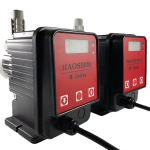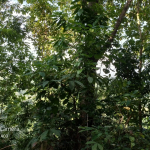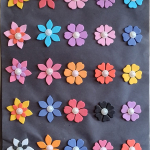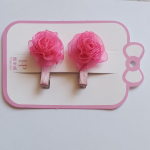Elden Ring Runes, the critically acclaimed action RPG by FromSoftware, introduces players to a vast, dark, and challenging world. A significant aspect of the game is the collection and utilization of runes, which serve as the primary currency for leveling up, purchasing items, and upgrading equipment. However, farming runes efficiently can be a challenge for both new and experienced players. In this article, we will explore how to plan a clean farm loop to maximize rune acquisition while minimizing downtime.
Understanding Runes in Elden Ring
Before diving into the farm loop strategies, it’s important to understand the role runes play in Elden Ring. These mystical symbols not only grant you the ability to level up but are also crucial for various in-game transactions. Defeating enemies and bosses yields runes, but collecting them can be a time-consuming process, especially if you don’t know the most effective farming methods.
In Elden Ring, there are many ways to farm runes, but the key to success lies in selecting the right farming loop that balances efficiency with risk. If you're wondering, can I buy runes for Elden Ring, the answer is yes—several third-party services offer rune purchases, but these are not officially supported by FromSoftware and come with their own set of risks, including potential account bans.
The Importance of a Clean Farm Loop
A clean farm loop refers to a farming strategy that minimizes wasted time and maximizes rune returns. Whether you're farming for a specific goal like upgrading your weapon or gaining experience, a clean farm loop focuses on repetitive, high-reward activities that allow you to collect runes as efficiently as possible.
Here’s how you can plan an effective farm loop:
1. Identify High-Rune Yield Enemies
The first step to an efficient farm loop is identifying enemies that drop high amounts of runes. Certain areas in Elden Ring are known for having high concentrations of enemies that yield substantial rune rewards. Some of the best rune-farming spots include:
-
Mohgwyn Palace: This is one of the most lucrative areas for rune farming, with enemies that drop a large number of runes. By clearing a specific area and utilizing a well-timed path, you can maximize your rune intake in this location.
-
The Subterranean Shunning-Grounds: Known for its tight corridors and high-level enemies, this area can provide valuable rune rewards if you can navigate through without dying.
-
Limgrave: Early in the game, Limgrave offers smaller, yet consistent rune drops, making it a great spot for beginners.
2. Optimize Your Route
Once you’ve identified the best areas to farm, it’s time to plan a route that minimizes travel time between enemies. A clean farm loop is about efficiency. Here’s how to optimize your route:
-
Map out enemy locations: Focus on areas where enemies spawn in clusters or where you can quickly eliminate large groups. This will reduce downtime and increase your overall rune output.
-
Clear enemies in a systematic order: Don’t just rush in blindly; take the time to clear enemies in a systematic order to avoid unnecessary backtracking. For example, if you’re in a dungeon, consider taking a loop around the area to clear enemies one by one, rather than running back to the starting point.
3. Utilize Rune-Boosting Items and Buffs
To make your farm loop even more efficient, take advantage of rune-boosting items and buffs. These can increase the number of runes you earn from defeated enemies. Some of the best items and buffs to use include:
-
Golden Scarab: This talisman increases the number of runes you gain from defeated enemies by 20%. Equip it during farming sessions to get the most out of each battle.
-
Silver-Pickled Fowl Foot: This item boosts your rune acquisition for a limited time, so use it right before engaging in a farming session to maximize your yield.
-
Rune Arcs: Rune Arcs provide powerful buffs that can also enhance your rune farming experience.
4. Know When to Rest and Reset
Another key aspect of a clean farm loop is knowing when to reset. Many farming loops involve clearing enemies, dying, and then respawning to repeat the process. Be mindful of your health, stamina, and item usage. If you’re getting too low on resources or if the area becomes too difficult to navigate, consider resting at a Site of Grace and resetting the loop.
Additionally, always keep an eye on your rune count. You don't want to risk losing a large batch of runes due to death, so if you feel like you're in danger, take the time to rest or return to a Site of Grace.
Common Pitfalls to Avoid
While planning a clean farm loop is essential, there are some common mistakes that players often make when farming runes in Elden Ring:
-
Overextending your route: Trying to farm too many areas at once can lead to inefficient routes and unnecessary travel. Stick to one or two areas at a time to avoid wasting energy and time.
-
Ignoring enemy difficulty: Make sure to balance your farming loop with the difficulty of the enemies in the area. Higher-level enemies may yield more runes but can also cost you more time and resources.
-
Not utilizing buffs and items: Rune-boosting items and buffs are key to maximizing your yield. Don’t neglect to equip them during your farming sessions.
Efficient rune farming is a crucial aspect of Elden Ring, and a well-planned clean farm loop is the key to maximizing your rune intake. By identifying high-yield enemies, optimizing your route, utilizing buffs, and knowing when to rest and reset, you’ll be able to farm runes with greater ease and efficiency. And while some players may consider purchasing runes through third-party services, remember that this can come with risks, and it’s often more rewarding to put in the effort yourself. Whether you’re just starting out or looking to level up faster, a clean farm loop will ensure you always have the resources you need to succeed in the world of Elden Ring.














